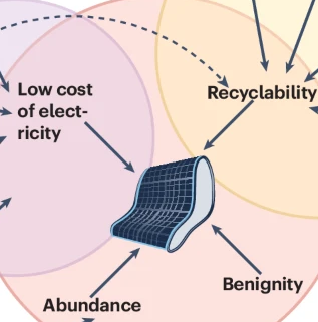How can we design solar cells that are not only efficient but also truly recyclable?
A new perspective article, “The ideal recyclable solar cell” by Marius Peters (first author) and Christoph J. Brabec (FAU Solar spokesperson), published in Nature Reviews Chemistry, addresses this pressing question.
With solar PV reaching terawatt-scale deployment, the paper argues for a paradigm shift: circularity must become a core design metric—not just an afterthought.
🔑 Key insights:
-
Balancing efficiency, stability, and recyclability
-
Understanding bonding strength, material mixing, and entropy for easier disassembly
-
Identifying material and architecture challenges for clean separation
-
Proposing a design roadmap for performance and end-of-life recovery
This work highlights recyclability as a foundational design parameter for the next generation of sustainable photovoltaics.
Read more in Nature Reviews Chemistry → https://www.nature.com/articles/s41570-025-00728-0
High Throughput Characterization and Modelling for PV

How can we design solar cells that are not only efficient but also truly recyclable?
A new perspective article, “The ideal recyclable solar cell” by Marius Peters (first author) and Christoph J. Brabec (FAU Solar spokesperson), published in Nature Reviews Chemistry, addresses this pressing question.
With solar PV reaching terawatt-scale deployment, the paper argues for a paradigm shift: circularity must become a core design metric—not just an afterthought.
🔑 Key insights:
Balancing efficiency, stability, and recyclability
Understanding bonding strength, material mixing, and entropy for easier disassembly
Identifying material and architecture challenges for clean separation
Proposing a design roadmap for performance and end-of-life recovery
This work highlights recyclability as a foundational design parameter for the next generation of sustainable photovoltaics.
Read more in Nature Reviews Chemistry → https://www.nature.com/articles/s41570-025-00728-0
Dr. Ian Marius Peters